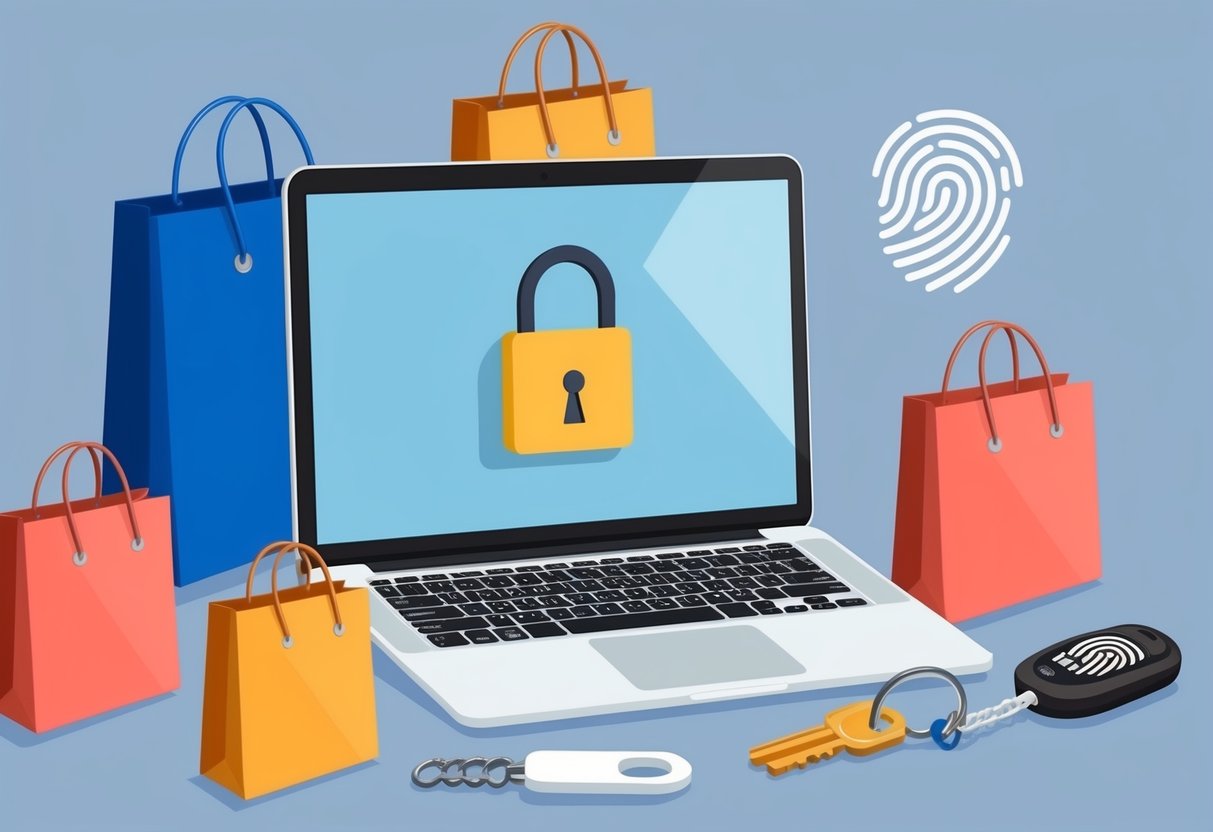
Data Security and User Authentication

Navigating seasonal sales safely online requires understanding how personal data is protected. Customers and retailers must work together to maintain secure transactions and deter threats like spam, phishing, and account breaches.
Best Practices for User Authentication
Secure authentication processes are essential for any online fashion retailer. Multi-factor authentication (MFA), which pairs passwords with authentication codes or biometric data, significantly reduces the risk of unauthorized logins.
By using unique and complex passwords for each shopping account, shoppers decrease the likelihood of a widespread breach if one site is compromised. Many platforms rely on session cookies and IP address tracking to monitor and authenticate activity.
A strong authentication protocol should include password reset options with email or SMS verification and security questions. Retailers may incorporate time-based one-time passwords (TOTPs) or biometric methods—fingerprint or facial recognition—for extra layers of security.
Retailers also frequently remind users to log out after completing purchases and avoid saving passwords on public devices. These simple steps make unauthorized access less likely, especially during high-traffic periods like major sales.
Security Measures for Online Shopping
Protecting user data demands robust security measures on both sides of the transaction. Secure Sockets Layer (SSL) certificates and encrypted connections keep sensitive information, such as credit card numbers and home addresses, shielded from cybercriminals.
Online stores should regularly update their platforms and plugins to patch vulnerabilities. To further secure the shopping experience, reputable sites use firewalls, intrusion detection systems, and employ technologies like Web Application Firewalls (WAFs) to filter malicious traffic.
They also utilize cookies for session management, which helps track logged-in users without storing sensitive data in the browser. For more information, see strategies outlined by Cyderes.
Shoppers are encouraged to verify website legitimacy, beware of unexpected email or text promotions, and never enter payment details on unsecured pages. Look for indicators like padlock icons and “https” in the browser bar before submitting any personal data.
How Retailers Prevent Spam
Fashion retailers proactively implement safeguards to prevent spam and ensure a smoother shopping experience. One method is to require user authentication before account creation or newsletter sign-up, which blocks automated bots from generating fake accounts.
Many sites deploy CAPTCHAs and rate-limiting measures to identify suspicious activity based on IP address patterns. Monitoring for anomalies—such as repeated failed login attempts or identical actions from a single location—helps curb spam attempts and protects genuine users.
Retailers may also use cookies to track sessions and detect unusual spikes in traffic that signal spam or scripted attacks. By maintaining updated anti-spam filters and leveraging advanced security tools, stores can maintain inbox cleanliness for their customers.
This protects the integrity of communications and ensures promotional updates reach legitimate users.
Leveraging Technology and Search Tools

Modern shoppers rely on more than instinct and tradition when navigating seasonal sales. Harnessing technology, from search engines to real-time location apps, can reveal hidden deals, support informed decisions, and help users stay ahead of trending fashion.
Using Search Data for Trend Analysis
Analyzing search data is essential for spotting emerging apparel trends and predicting when top deals are likely to appear online. Platforms like Yahoo collect vast amounts of search information, highlighting which products, brands, and styles are gaining momentum.
Fashion retailers and shoppers can monitor spikes in search interest to anticipate the next wave of popular items. For example, search volume for terms like “spring denim sale” or “winter boots discount” indicates both upcoming trends and seasonal price drops.
These insights help individuals optimize their buying strategy, ensuring they focus on in-demand products or early markdowns rather than missing the best offers. Google Trends and Yahoo’s search tools support daily trend tracking, making it easier for shoppers to adjust their wishlist or shopping carts as patterns shift.
By combining keyword clusters in search queries—such as “best summer dress deals” or “outlet sale jackets”—shoppers can surface the most relevant results. Integrating search data with newsletters, price tracking tools, or browser extensions enhances this method.
Geolocation Data and Local Deals
Geolocation data enables shoppers to uncover local discounts and flash sales that aren’t as widely advertised online. Many retail chains push app notifications or text messages for in-store markdowns when potential customers are near their brick-and-mortar locations.
This can lead to exclusive offers unavailable to general online audiences. Apps and websites can use geolocation to personalize results, showing specific store promotions, pop-up events, and limited-time coupons within the shopper’s immediate area.
A table summarizing common benefits:
| Geolocation Feature | Shopper Benefit |
|---|---|
| Store-specific coupons | Extra savings at nearby stores |
| Local inventory updates | Real-time stock and clearance info |
| App-only onsite promotions | Timely alerts on new markdowns |
Fashion fans also use location-based alerts to plan visits during peak sale periods or to discover unscheduled outlet events. By allowing apps access to their device’s location, they maximize the chance of capitalizing on local offers before inventory runs out, especially during major seasonal promotions.



